Gorgeous Six: girls who had a thermonuclear blast counted
Once computers were women, calculators worked on electric motors, instead of textbooks there were drawings, and programmers looked like this:
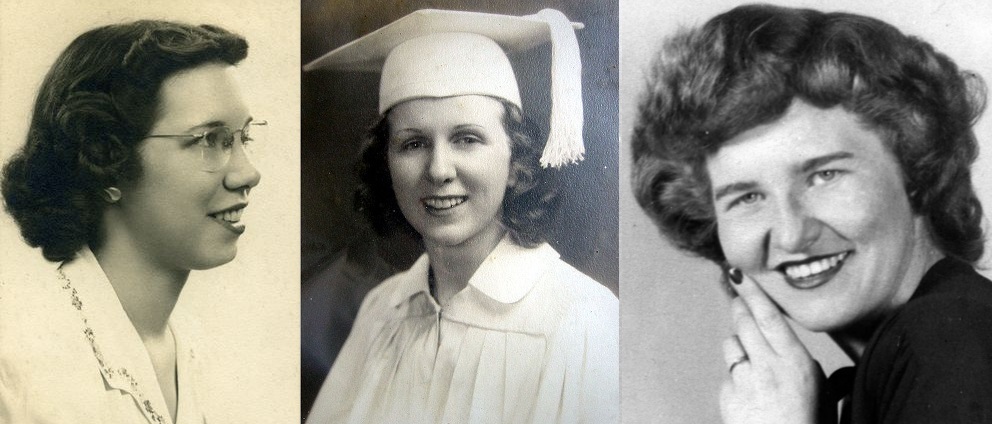
ENIAC girls
During World War II, each gun required its own ballistic table and they were calculated for each type of projectile and gun before being sent to the front, and with various combinations of many parameters (air temperature, wind speed, soil density under the gun, elevation of the barrel, projectile speed, gun barrel temperature). These calculations involved 75 young female graduates.
')
One of them, Betty, recalls:
The same ballistic problem was solved in 30 minutes on a differential analyzer :
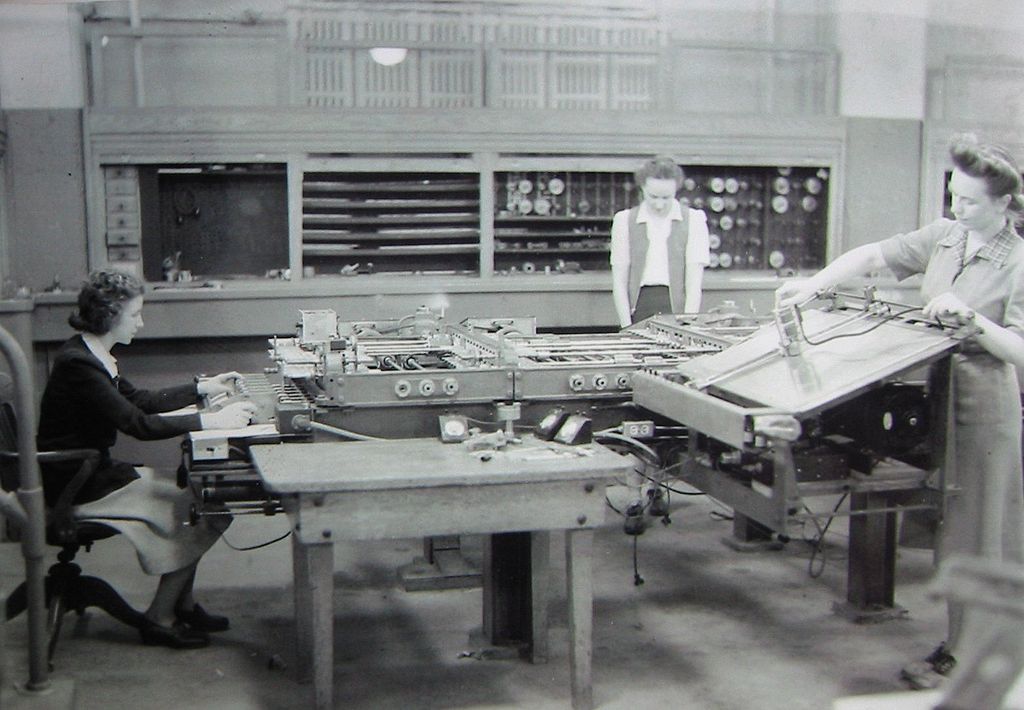
The largest and most complex mechanical calculator, there were only 3 in America and 5 or 6 in the world (in the UK).
Pictured: Kay McNulty and Alyse Snyder
The ENIAC computer handled similar ballistic calculations in about 10 seconds . But in order to “program” it for a new task (reconnect cables), it took about two days.
Electronic Numerical Integrator and Computer (Electronic numerical integrator and computer) is the first general-purpose electronic digital computer that can be reprogrammed to solve a wide range of tasks.
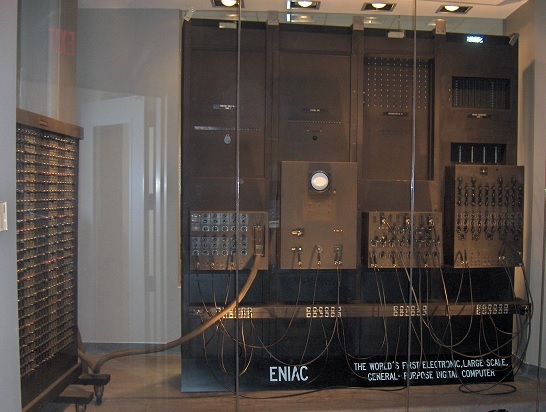 The creation of ENIAC took 200,000 man-hours and 486,804.22 US dollars. In total, the complex included 17,468 tubes of 16 different types, 7,200 silicon diodes, 1,500 relays, 70,000 resistors and 10,000 capacitors.
The creation of ENIAC took 200,000 man-hours and 486,804.22 US dollars. In total, the complex included 17,468 tubes of 16 different types, 7,200 silicon diodes, 1,500 relays, 70,000 resistors and 10,000 capacitors.
Weight - 27 tons.
The amount of memory is 20 number-words.
Power consumption - 174 kW.
Computational power - 357 multiplication operations or 5000 addition operations per second.
The clock frequency is 100 kHz, that is, one pulse every 10 microseconds.
The main computational cycle consisted of 20 pulses and took 200 microseconds.
Addition was carried out for 1 clock cycle, multiplication - for 14 clock cycles. Multiplication was replaced by multiple addition, so that 1 multiplication was equal to 14 addition operations and was performed, respectively, for 2800 microseconds.
Data I / O device - IBM punch card reader: 125 cards / minute for input, 100 cards / minute for output.
The calculations were made in the decimal system, after careful analysis, it was given preference over the binary system. The computer operated with numbers with a maximum length of 20 digits.
Programming a task on ENIAC could take up to two days, and its solution could take several minutes. Most of the time was spent on printing the punch cards and sorting them. During the calculations, it was necessary to make changes to the program on the fly and wait for the replacement of the burnt out lamps.
The failure of one lamp, one capacitor or a resistor meant stopping the work of the entire machine, there were a total of 1.8 billion different failure modes per second. Prior to this, mankind has not created any device of such complexity and with such a requirement for reliability.
As a test, ENIAC was assigned the task of mathematical modeling of a thermonuclear super-bomb explosion according to the Ulam-Teller hypothesis. Von Neumann, who also worked as a consultant at the Los Alamos laboratory and at the Moore Institute, suggested that the Teller group use ENIAC for calculations as early as 1945. Solving the problem of thermonuclear weapons required such an enormous amount of computation that no electromechanical calculators available to the Laboratory could cope with it.
The performance of ENIAK was too small for a full-fledged simulation, therefore Metropolis and Frenkel greatly simplified the equation, ignoring many physical effects and trying to at least approximately calculate only the first phase of the deuterium-tritium explosion in one-dimensional space.
The details and results of the calculations carried out in November-December 1945 are still classified . ENIAC was faced with the task of solving the most complicated differential equation, for entering the initial data to which it took about a million punched cards .
The introductory task was divided into several parts so that the data could fit in the computer's memory. Intermediate results were displayed on punch cards and, after re-switching, they were again entered into the car. In April 1946, the Teller group discussed the results of the calculations and concluded that they are quite encouraging (although very approximately) prove the possibility of creating a hydrogen bomb.
Stanislav Ulam was present at the discussion of the calculation results. Struck by the speed of ENIAK, he proposed to make calculations for a thermonuclear explosion using the Monte Carlo method. In 1947, 9 calculations were performed on this method with various initial parameters at ENIAC. After that, the Monte Carlo method was used in all calculations related to the development of thermonuclear weapons.
In April and July 1946, the British physicist Douglas Hartry solved the problem of air flow past an airplane wing moving faster than the speed of sound at ENIAC. ENIAK gave him the results of calculations up to the seventh digit. Hartree wrote about this work experience in an article in the September 1946 issue of Nature.
In 1949, von Neumann used ENIAC to calculate the numbers π and e with an accuracy of 2000 decimal places. Von Neumann was interested in the statistical distribution of numbers in these numbers. It was assumed that the numbers in these numbers appear with equal probability, which means that computers can actually generate random numbers that can be used as input parameters for Monte-Carlo calculations. Calculations for the number e were performed in July 1949, and for the number π in one day at the beginning of September. The results showed that "the numbers in the number π go in random order, but with the number e everything was much worse"
ENIAC could be programmed to perform a complex sequence of operations, including loops, branching, and sub-procedures. The task of formalizing the problem and transferring it into the car was complex and took several weeks. After the task was described on paper, it was necessary to work on switches and cables. A couple of days. Then there was the process of verification and debugging, step by step executing the program. The program for calculating the remainder of the division on the emulator shows how it was.

View full algorithm

The work of the girls was originally classified, but then the world learned about beauties.

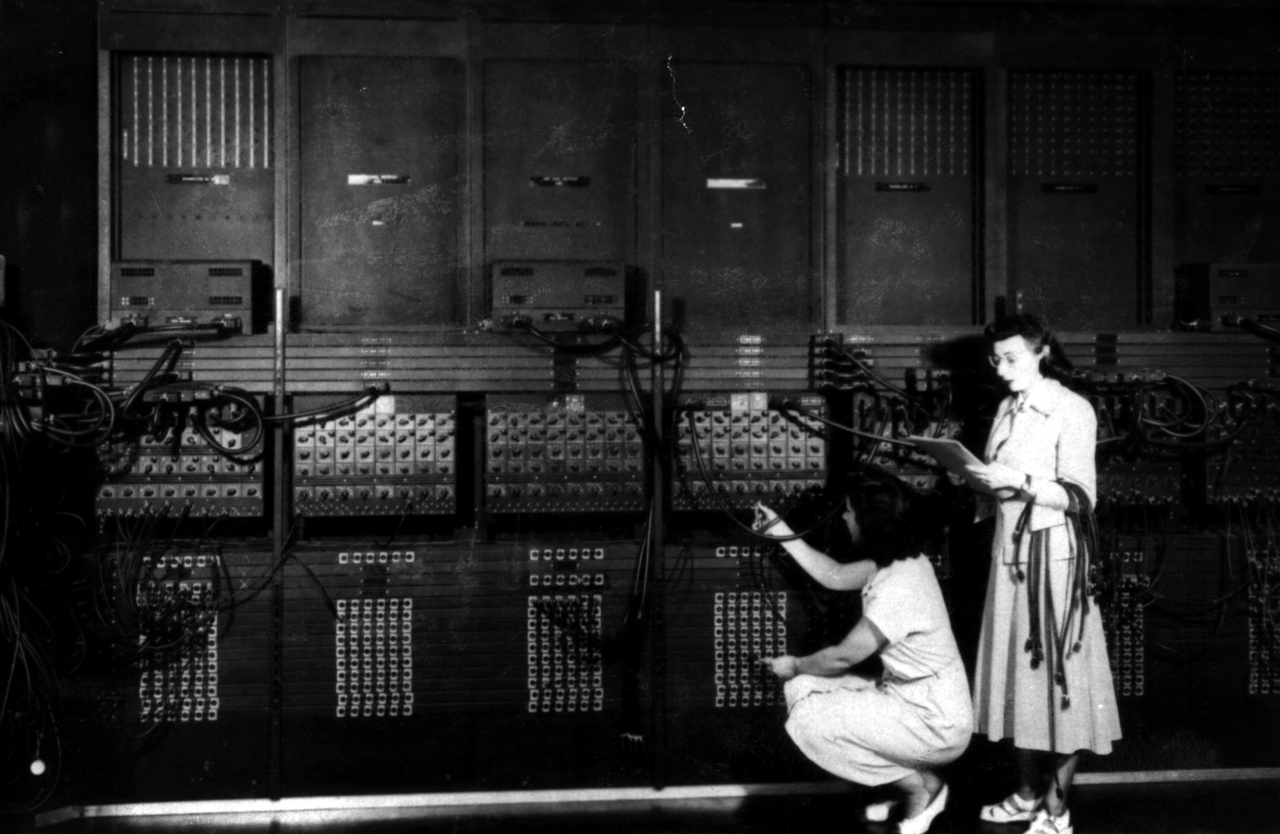
Ruth Lichterman (crouched) and Marlyn Wescoff (standing) "introduce" a new program into ENIAC with the help of wires and jumpers.
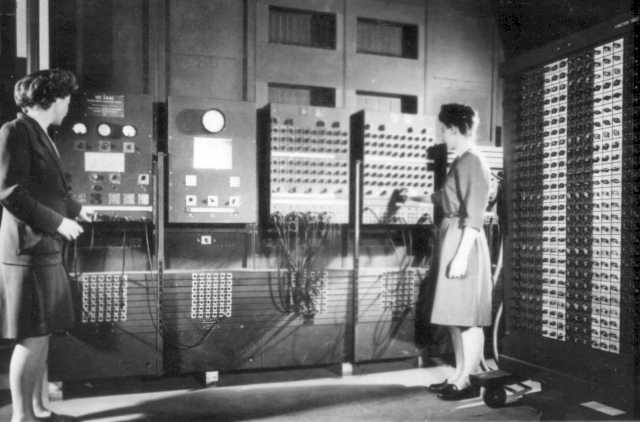
Jennings and Frances Spence
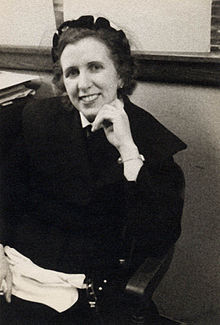
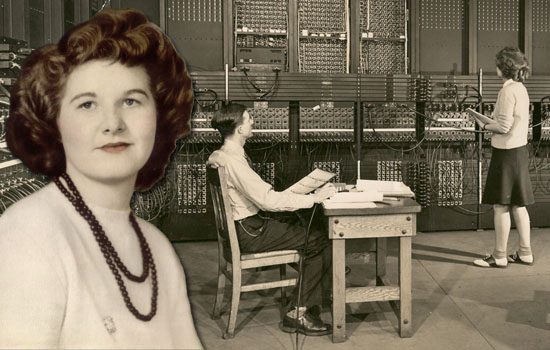
Bartik describes the first public demonstration of ENIAC:
Later, Bartik became part of a group that upgraded ENIAC to the level of “Stored-program computer” . The program was stored in the electronic memory of the computer, and not “in cables and jumpers”.
After the war, she helped develop BINAC (the first commercial digital computer) and UNIVAC I.
Recalling years of work with Eckert and Mauchly, she describes their small working group of computer engineers as “technical Camelot” (“technical Camelot”).
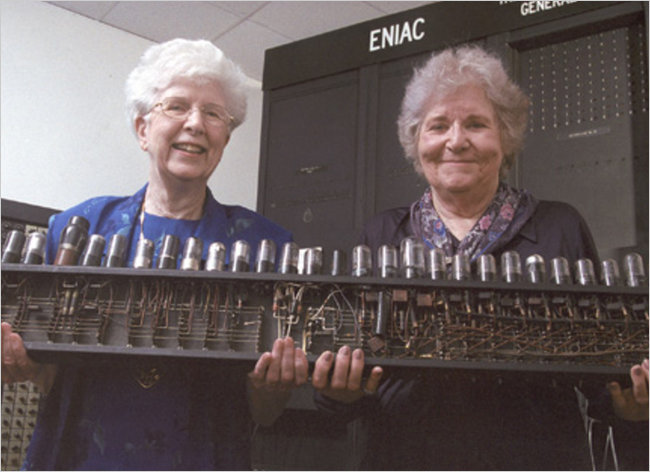
Jean Bartik (right) and Kay McNulty Mauchly Antonelli (left) are lifelong friends.
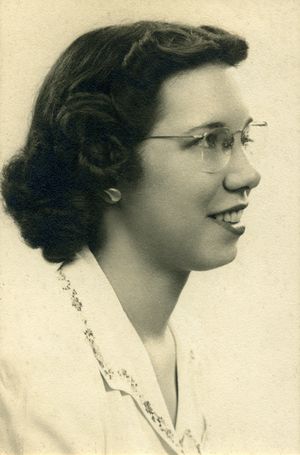 It is Betty that we owe to the gray-beige computers, that she convinced the engineers to abandon the black colors. She had a hand in creating the keyboard.
It is Betty that we owe to the gray-beige computers, that she convinced the engineers to abandon the black colors. She had a hand in creating the keyboard.
She was one of those who wrote the first generative programming system ( SORT / MERGE ), and wrote the first analytics and statistics package that was used in the US census in the 50s.
She helped develop C-10, which became the prototype of modern programming languages.
Took part in the development of the early COBOL and FORTRAN standards along with Grace Hopper .
One day, Batty managed to convince John von Neumann to add a “stop instruction” button. At first, he was skeptical of this idea, but ultimately recognized the need for such a function.
Today is Betty's birthday.

PS
In 2016, a 20-minute documentary came out , it costs $ 5, you can look at the trailer .
Together with the Edison company we continue the spring marathon of publications and congratulate all the girls on the upcoming holiday.
I will try to get to the primary sources of IT-technologies, to understand how they thought and what concepts were in the minds of the pioneers, what they dreamed about, how they saw the world of the future. Why did you think “computer”, “network”, “hypertext”, “intelligence amplifiers”, “collective problem solving system”, what meaning did they put into these concepts, what tools they wanted to achieve a result.
I hope that these materials will serve as an inspiration for those who are wondering how to go “from Zero to Unit” (to create something that had never happened before). I would like IT and “programming” to stop being just “coding for the sake of dough”, and recall that they were conceived as a lever to change themethods of warfare, education, a way of working together, thinking and communication, as an attempt to solve world problems and answer facing humanity. Something like this.
0 March. Seymour papert
March 1. Xerox alto
March 2, "Call Jake." NIC and RFC history
March 3, Grace "Grandma COBOL" Hopper
March 4 Margaret Hamilton: "Guys, I'll send you to the moon"
March 5, Hedy Lamarr. And in the movie naked to play and torpedo the bullet into the enemy
March 7 Gorgeous Six: girls who had a thermonuclear explosion calculated
March 8, "Video Games, I'm your father!"

ENIAC girls
During World War II, each gun required its own ballistic table and they were calculated for each type of projectile and gun before being sent to the front, and with various combinations of many parameters (air temperature, wind speed, soil density under the gun, elevation of the barrel, projectile speed, gun barrel temperature). These calculations involved 75 young female graduates.
')
One of them, Betty, recalls:
“At that time, we had mechanical calculators, on gears and with electric drives, which could perform simple arithmetic operations. You performed the multiplication and recorded the answer, then to re-enter it into the machine. We prepared ballistic tables for each gun, approximately for 1800 trajectories. To calculate manually one trajectory it took 30-40 hours of sitting in front of a table with a leaf and a calculator. The name of my profession for the ballistic project was “computer”. The idea was that I was not just doing arithmetic, but I was deciding what to do in the next step. ENIAC made me, one of the first "computers", outdated technology. "
The same ballistic problem was solved in 30 minutes on a differential analyzer :

The largest and most complex mechanical calculator, there were only 3 in America and 5 or 6 in the world (in the UK).
Pictured: Kay McNulty and Alyse Snyder
The ENIAC computer handled similar ballistic calculations in about 10 seconds . But in order to “program” it for a new task (reconnect cables), it took about two days.
ENIAC
Electronic Numerical Integrator and Computer (Electronic numerical integrator and computer) is the first general-purpose electronic digital computer that can be reprogrammed to solve a wide range of tasks.
 The creation of ENIAC took 200,000 man-hours and 486,804.22 US dollars. In total, the complex included 17,468 tubes of 16 different types, 7,200 silicon diodes, 1,500 relays, 70,000 resistors and 10,000 capacitors.
The creation of ENIAC took 200,000 man-hours and 486,804.22 US dollars. In total, the complex included 17,468 tubes of 16 different types, 7,200 silicon diodes, 1,500 relays, 70,000 resistors and 10,000 capacitors.Weight - 27 tons.
The amount of memory is 20 number-words.
Power consumption - 174 kW.
Computational power - 357 multiplication operations or 5000 addition operations per second.
The clock frequency is 100 kHz, that is, one pulse every 10 microseconds.
The main computational cycle consisted of 20 pulses and took 200 microseconds.
Addition was carried out for 1 clock cycle, multiplication - for 14 clock cycles. Multiplication was replaced by multiple addition, so that 1 multiplication was equal to 14 addition operations and was performed, respectively, for 2800 microseconds.
Data I / O device - IBM punch card reader: 125 cards / minute for input, 100 cards / minute for output.
The calculations were made in the decimal system, after careful analysis, it was given preference over the binary system. The computer operated with numbers with a maximum length of 20 digits.
Programming a task on ENIAC could take up to two days, and its solution could take several minutes. Most of the time was spent on printing the punch cards and sorting them. During the calculations, it was necessary to make changes to the program on the fly and wait for the replacement of the burnt out lamps.
The failure of one lamp, one capacitor or a resistor meant stopping the work of the entire machine, there were a total of 1.8 billion different failure modes per second. Prior to this, mankind has not created any device of such complexity and with such a requirement for reliability.
Using
Thermonuclear blast
As a test, ENIAC was assigned the task of mathematical modeling of a thermonuclear super-bomb explosion according to the Ulam-Teller hypothesis. Von Neumann, who also worked as a consultant at the Los Alamos laboratory and at the Moore Institute, suggested that the Teller group use ENIAC for calculations as early as 1945. Solving the problem of thermonuclear weapons required such an enormous amount of computation that no electromechanical calculators available to the Laboratory could cope with it.
The performance of ENIAK was too small for a full-fledged simulation, therefore Metropolis and Frenkel greatly simplified the equation, ignoring many physical effects and trying to at least approximately calculate only the first phase of the deuterium-tritium explosion in one-dimensional space.
The details and results of the calculations carried out in November-December 1945 are still classified . ENIAC was faced with the task of solving the most complicated differential equation, for entering the initial data to which it took about a million punched cards .
The introductory task was divided into several parts so that the data could fit in the computer's memory. Intermediate results were displayed on punch cards and, after re-switching, they were again entered into the car. In April 1946, the Teller group discussed the results of the calculations and concluded that they are quite encouraging (although very approximately) prove the possibility of creating a hydrogen bomb.
Stanislav Ulam was present at the discussion of the calculation results. Struck by the speed of ENIAK, he proposed to make calculations for a thermonuclear explosion using the Monte Carlo method. In 1947, 9 calculations were performed on this method with various initial parameters at ENIAC. After that, the Monte Carlo method was used in all calculations related to the development of thermonuclear weapons.
Wing
In April and July 1946, the British physicist Douglas Hartry solved the problem of air flow past an airplane wing moving faster than the speed of sound at ENIAC. ENIAK gave him the results of calculations up to the seventh digit. Hartree wrote about this work experience in an article in the September 1946 issue of Nature.
PI
In 1949, von Neumann used ENIAC to calculate the numbers π and e with an accuracy of 2000 decimal places. Von Neumann was interested in the statistical distribution of numbers in these numbers. It was assumed that the numbers in these numbers appear with equal probability, which means that computers can actually generate random numbers that can be used as input parameters for Monte-Carlo calculations. Calculations for the number e were performed in July 1949, and for the number π in one day at the beginning of September. The results showed that "the numbers in the number π go in random order, but with the number e everything was much worse"
ENIAC programming
ENIAC could be programmed to perform a complex sequence of operations, including loops, branching, and sub-procedures. The task of formalizing the problem and transferring it into the car was complex and took several weeks. After the task was described on paper, it was necessary to work on switches and cables. A couple of days. Then there was the process of verification and debugging, step by step executing the program. The program for calculating the remainder of the division on the emulator shows how it was.

View full algorithm
Girls

The work of the girls was originally classified, but then the world learned about beauties.

Ruth Lichterman and Marlyn Wescoff

Ruth Lichterman (crouched) and Marlyn Wescoff (standing) "introduce" a new program into ENIAC with the help of wires and jumpers.
Frances Spence

Jennings and Frances Spence
Kathleen "Kay" McNulty Mauchly Antonelli

Jean bartik

Bartik describes the first public demonstration of ENIAC:
“The day when the world learned about ENIAC was the most exciting day of my life. The demonstration was incredible. ENIAC calculated the trajectory faster than the speed of the bullet. We handed out copies of the calculations at the same moment they were started. ENIAC was 1000 times faster than any car at that time. With all the flashing lights, it was an impressive current to see how fast the calculations were. ”
Later, Bartik became part of a group that upgraded ENIAC to the level of “Stored-program computer” . The program was stored in the electronic memory of the computer, and not “in cables and jumpers”.
After the war, she helped develop BINAC (the first commercial digital computer) and UNIVAC I.
Recalling years of work with Eckert and Mauchly, she describes their small working group of computer engineers as “technical Camelot” (“technical Camelot”).

Jean Bartik (right) and Kay McNulty Mauchly Antonelli (left) are lifelong friends.
Betty holberton
“I had a fantastic life. Everything I did was the beginning of something new. ”
 It is Betty that we owe to the gray-beige computers, that she convinced the engineers to abandon the black colors. She had a hand in creating the keyboard.
It is Betty that we owe to the gray-beige computers, that she convinced the engineers to abandon the black colors. She had a hand in creating the keyboard.She was one of those who wrote the first generative programming system ( SORT / MERGE ), and wrote the first analytics and statistics package that was used in the US census in the 50s.
She helped develop C-10, which became the prototype of modern programming languages.
Took part in the development of the early COBOL and FORTRAN standards along with Grace Hopper .
One day, Batty managed to convince John von Neumann to add a “stop instruction” button. At first, he was skeptical of this idea, but ultimately recognized the need for such a function.
proof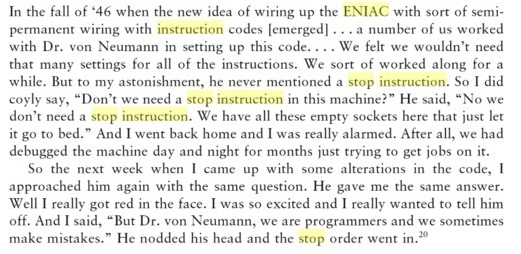

Today is Betty's birthday.

PS
In 2016, a 20-minute documentary came out , it costs $ 5, you can look at the trailer .
Together with the Edison company we continue the spring marathon of publications and congratulate all the girls on the upcoming holiday.
I will try to get to the primary sources of IT-technologies, to understand how they thought and what concepts were in the minds of the pioneers, what they dreamed about, how they saw the world of the future. Why did you think “computer”, “network”, “hypertext”, “intelligence amplifiers”, “collective problem solving system”, what meaning did they put into these concepts, what tools they wanted to achieve a result.
I hope that these materials will serve as an inspiration for those who are wondering how to go “from Zero to Unit” (to create something that had never happened before). I would like IT and “programming” to stop being just “coding for the sake of dough”, and recall that they were conceived as a lever to change the
0 March. Seymour papert
March 1. Xerox alto
March 2, "Call Jake." NIC and RFC history
March 3, Grace "Grandma COBOL" Hopper
March 4 Margaret Hamilton: "Guys, I'll send you to the moon"
March 5, Hedy Lamarr. And in the movie naked to play and torpedo the bullet into the enemy
March 7 Gorgeous Six: girls who had a thermonuclear explosion calculated
March 8, "Video Games, I'm your father!"
Source: https://habr.com/ru/post/278741/
All Articles